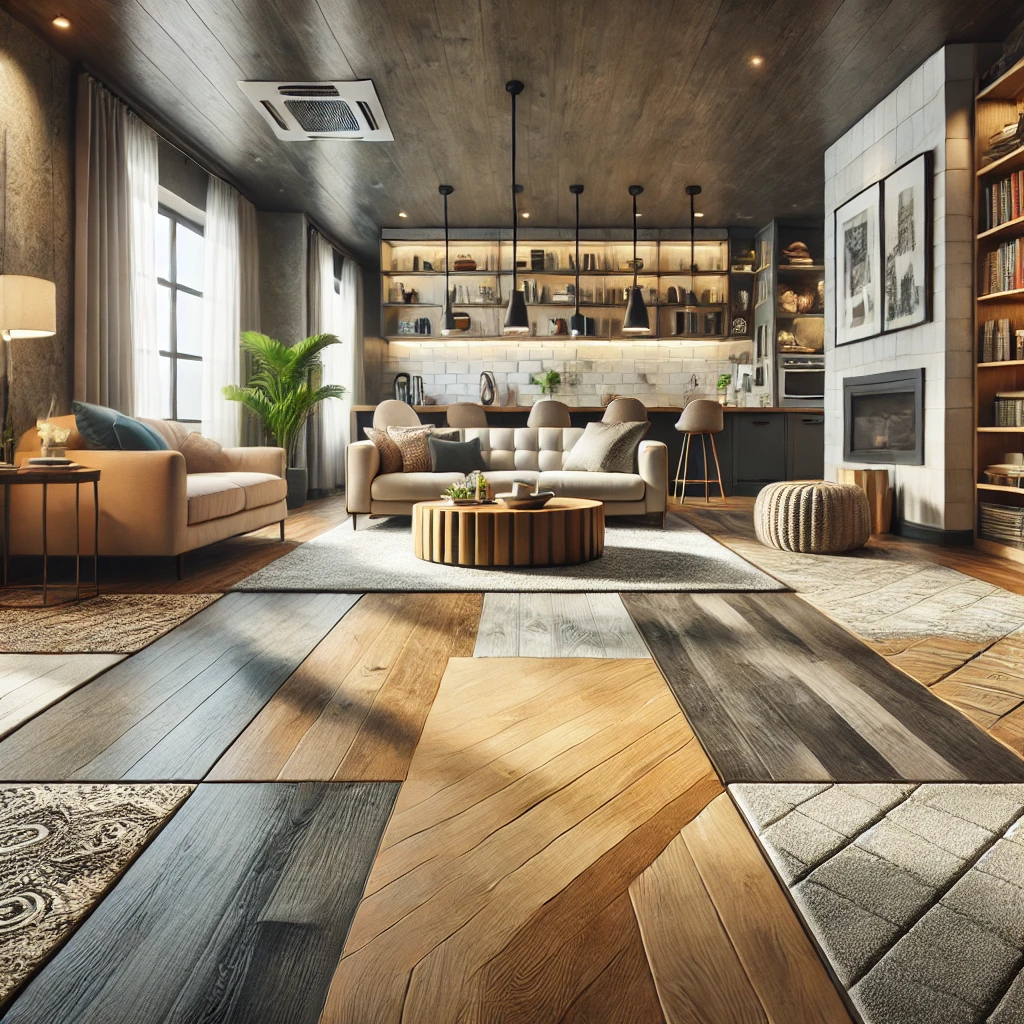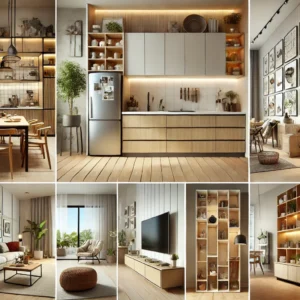Choosing the right flooring for your space can feel overwhelming, but it doesn’t have to be. With a myriad of options available, you can create an inviting atmosphere that truly reflects your personality. Whether you’re aiming for warmth with wood or a sleek modern look with tiles, the right choice can transform a room into something extraordinary. This guide aims to make the process easier and more enjoyable, so you can step confidently into your perfect floor.
Table of Contents
ToggleMain Points
- Understand different flooring materials and their benefits.
- Consider the style and purpose of each room.
- Evaluate budget and maintenance requirements.

Exploring the Spectrum of Flooring Materials: Advantages and Disadvantages
Choosing the right flooring can feel like navigating a labyrinth; yet, understanding each material’s merits and drawbacks transforms confusion into clarity. From the warmth of hardwood to the resilience of tiles, every option offers a unique blend of aesthetics and functionality. Consideration of factors such as durability, maintenance, and comfort will guide your decision. In summary, weigh the choices carefully: each floor tells a story, and the right one will echo in your home.
- Hardwood: Offers elegance but requires regular upkeep.
- Laminate: Budget-friendly and versatile, yet less durable.
- Tile: Moisture-resistant and easy to clean, although harder underfoot.

An Engaging Beginning: Setting the Stage for Common Queries
When diving into the realm of flooring, many wonder about the long-term implications and upkeep of their choices. What’s best for high-traffic areas? How should one care for different materials? This article will address such vital concerns, ensuring a comprehensive perspective on selecting the ideal flooring.

How to Assess Your Home’s Foot Traffic and Its Impact on Flooring Choices
Understanding your home’s foot traffic is essential when selecting the right flooring. Begin by observing where family members and guests frequently walk. High-traffic areas like hallways or living rooms need durable options, while quieter spaces may allow for more delicate materials. Consider the Bathroom Vanities as examples of spaces where moisture resistance is crucial. Mapping out these patterns can help you harmonize style with practicality, ensuring longevity in your flooring choice without compromising on aesthetics.
The Importance of Style: Matching Flooring with Your Interior Design
Choosing the right flooring is like selecting the perfect frame for a masterpiece. It harmonizes the space, elevating your interior design to new heights. Imagine walking into a room where the flooring whispers elegance and warmth. This synergy draws the eye and evokes a sense of belonging. However, style extends beyond aesthetics; it influences mood and comfort. So, while you select materials, consider how each element interacts. Ultimately, stylish flooring can transform your home into a sanctuary of creativity and comfort.
Harmonizing Elements
When designing, think about balance. The right flooring not only complements furniture but also enhances the entire atmosphere. Each texture, color, and pattern tells a story. Therefore, ensure each choice aligns with your vision. In the end, it’s all about creating a cohesive experience that feels uniquely you. Remember, it’s your space. Let your personality shine through every detail.
Bathroom Vanities can further accentuate this aesthetic, serving as focal points that blend functionality with beauty. Make choices that resonate with your style, and your home will reflect your unique journey.
Environmentally Friendly Flooring Options for Sustainable Living
Choosing the right flooring can transform your home and the environment. Sustainable options encourage a connection with nature while providing comfort and style. Consider these innovative choices:
- Bamboo: A rapidly renewable resource, bamboo is durable and offers a unique aesthetic.
- Cork: Soft and warm, cork reduces noise and is harvested without harming the tree.
- Reclaimed Wood: Utilizing older timber minimizes waste and gives character to your space.
Each option enhances sustainable living, inviting a sense of harmony and responsibility into your everyday life. Remember, the foundation of a green home begins beneath your feet.
Cost Considerations: Budgeting for Installation and Long-Term Maintenance
When embarking on your journey to install bathroom vanities, it’s crucial to evaluate the cost implications. Not just for the initial installation but also for long-term maintenance. Planning a budget might seem overwhelming at first, yet it empowers you to make informed decisions. Remember, unexpected expenses can arise, especially when dealing with plumbing challenges. So, be proactive! You might find that investing wisely in your bathroom vanities leads to greater satisfaction down the line.
Expert Tips for DIY Flooring Installation vs. Hiring Professionals
Choosing between DIY flooring installation and hiring professionals is not just a simple decision; it’s an adventure laden with choices. If you have the time and desire to learn, DIY can be fulfilling, allowing you to shape your space uniquely. However, consider the complexities involved—varying floor types and installation methods can muddle your path. On the other hand, professionals bring experience that often saves you from potential pitfalls.
“In DIY, passion fuels creativity, but precision is paramount.”
Key Considerations
| Aspect | DIY | Professionals |
|---|---|---|
| Cost | Lower initial investment | Higher upfront cost |
| Time | Time-consuming | Efficient |
| Skill | Requires learning curve | Expertise assured |
Ultimately, the journey you choose shapes not only your home but also your experience. Whether to embrace the world of DIY or to seek expert help hinges on your confidence and the complexity of your vision. Bathroom Vanities might seem straightforward, but every detail counts in crafting a flawless finish.
Related content:
Unveiling the Origins: The Fascinating Story Behind the Term ‘Cabinet’
Conclusion
In conclusion, choosing the right flooring can significantly impact the overall ambiance of your space. A good flooring solution not only enhances aesthetic appeal but also ensures comfort and durability. This decision requires careful consideration of various factors, as each type of flooring offers unique benefits. Furthermore, investing time in researching your options will pay off in the long run. By prioritizing your needs and preferences, you can create a welcoming environment that reflects your style. Remember, quality flooring is more than just a functional element; it plays a vital role in shaping your home’s character and warmth.
Frequently Asked Questions
What are the most common types of flooring materials?
The most common types of flooring materials include hardwood, laminate, vinyl, tile, and carpet.
How do I choose the right flooring for my home?
Consider factors such as the room’s purpose, foot traffic, climate, and your budget when selecting flooring.
Is hardwood flooring suitable for every room?
Hardwood is not recommended for areas with high moisture, like basements or bathrooms, but it’s excellent for living spaces and bedrooms.
What is the average lifespan of different flooring types?
Hardwood can last 25-30 years, laminate 15-25 years, vinyl 10-20 years, tile can last a lifetime with proper care, and carpet typically lasts 5-15 years.
How do I maintain and clean my flooring?
Regular sweeping, vacuuming, and mopping with appropriate cleaners can help maintain your flooring. Specific care may vary depending on the type of flooring.





